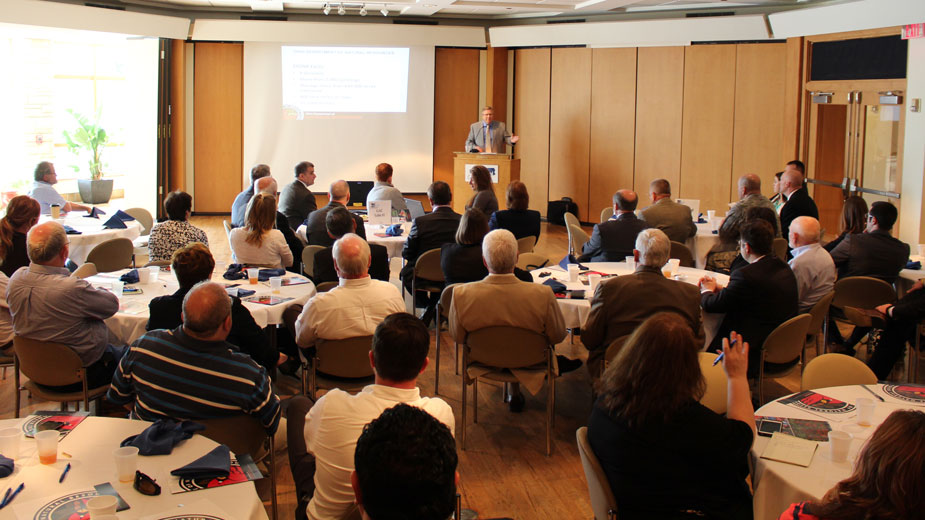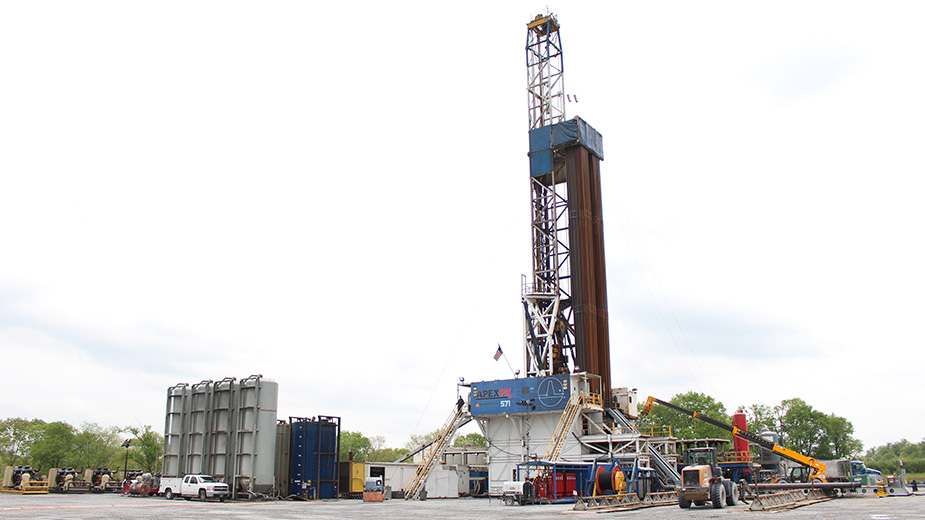ODNR Officials Tout Well Oversight at Chamber Event
YOUNGSTOWN, Ohio – The plugging of the injection well blamed for a dozen tremors of the Mahoning Valley in 2011 should be on its way to being completed, an official with the Ohio Department of Natural Resources said Tuesday.
The plugging of the Northstar No. 1 well, one of the assets of the former D&L Energy, went through the appeals process and now is tied up in the bankruptcy court, said Rick Simmers, chief of ODNR’s division of oil and gas resource management.
“The trustee has made application for a plugging permit for the Northstar 2, which they’ve plugged. They’ve, I believe, applied for a plugging permit for the Northstar 3 and we’re told that they’re about to apply for a plugging permit for Northstar 1,” Simmers said.
Simmers joined James Zehringer, ODNR director, and Gary Obermiller, chief of Ohio State Parks, to speak at the Youngstown Warren Regional Chamber’s Government Affairs Council luncheon.
Ohio’s oversight of injection wells is through a primacy program, meaning the federal government gave ODNR permission to run the program on its behalf, requiring federal review of Ohio’s laws and rules, Simmers said.
“So the federal government gets to decide whether our laws and rules are at least as stringent, if not more stringent, than the federal code,” he said. Provisions Ohio has such as the seismic monitoring and automatic shutoffs on the wells go beyond what the federal requirements, he added
Companies seeking to build an injection well now go through a two-step process, he said. One permit is required to build the well and a second must be granted to operate it, he said.
Although production is gradually slowing, oil and gas production in Ohio is reaching the level at which it is producing as much energy as it uses, Simmers pointed out.
“Five years ago we produced 9% of what Ohio uses in gas. Last year we produced 95% of the gas that Ohio uses. In 2016 we will produce more than what we use in the state of Ohio,” Zehringer said.
Zehringer, in his remarks, pointed to the revitalization he saw in the Mahoning Valley that morning, much of which he attributed to the oil and gas industry in the region.
“We’re going to continue to make sure that we have regulations and policies in place that are science-based and not emotion-based, and we continue to work with the industry,” Zehringer said. Gov. John Kasich wants oil and gas production to increase “but not at the expense of the environment,” he remarked.
“There will be substantial changes to oil and gas rules in the coming year,” with 10 to 15 rules now being considered, Simmers said. The state budget bill contains a provision that would provide local firefighters, emergency medical technicians and other first responders immediate access to data including confidential trade secret data in the event of a spill or other incident.
Changes being considered include rules governing oilfield waste recycling operations and reporting of oil spills to the oil and gas division, he said.
Members of the audience – including some opponents of oil and gas drilling – appeared satisfied with the ODNR officials’ presentation.
“The ODNR officials did a good job of outlining the fact that we have wells currently in Mill Creek Park and they’re stepping up to make sure that they’re regulating the industry in an environmentally sound way,” said Jackie Stewart, spokeswoman for Energy in Depth, an industry advocacy group.
“One of the things they cited was the recent seismology report that downgraded the state of Ohio as a risk,” she noted.
More than a dozen environmental activists representing FrackFree Mahoning Valley, most holding handmade signs, protested on the sidewalk outside Mill Creek MetroParks’ D.D. and Velma Davis Education and Visitor Center, where the event was held.
Dr. Ray Beiersdorfer, professor of geological and environmental sciences at Youngstown State University, an industry critic who attended the luncheon, acknowledged he is encouraged by the ODNR officials’ presentation and their responses to the questions posed.
“When we started having the earthquakes in 2011, we had 8½ months of the ODNR denying any connection between [injection wells and the quakes] and now they’re being much more responsive to it,” he said. “I think it’s in part due to the fact that we have active citizens who are protesting in front of injection wells. We have a strong civic community here and I think it’s having an impact.”
Copyright 2024 The Business Journal, Youngstown, Ohio.


